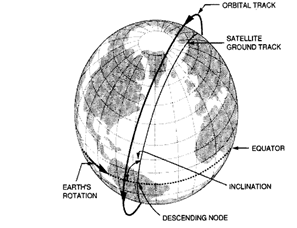(General Studies II – Polity section – Functions and Responsibilities of the Union and the States, Issues and Challenges Pertaining to the Federal Structure, Devolution of Powers and Finances up to Local Levels and Challenges Therein.)
- The ongoing violence in Manipur, which began in May 2023, represents a profound breakdown of constitutional machinery, making it a textbook case for invoking Article 356.
- The persistent ethnic clashes, loss of life, and displacement underscore the inability of the State government to uphold constitutional governance, demanding immediate intervention from the Union government and, potentially, the President of India.
The Case for Article 356 in Manipur –
- Breakdown of Constitutional Machinery: Article 356 allows the President to assume control of a state’s governance if it becomes impossible for the State government to function in accordance with the Constitution. The violence in Manipur has resulted in over 250 deaths, the displacement of over 1 lakh people, and widespread destruction of property, including homes, temples, and churches, reflecting the State’s inability to maintain law and order.
- Historical Context of Article 356: Dr. B.R. Ambedkar envisioned this provision as a safeguard against the breakdown of governance. Constituent Assembly debates emphasized its necessity for ensuring law and order in extreme circumstances, as articulated by members like K. Santhanam and Alladi Krishnaswami Ayyar.
- Role of the Supreme Court: Despite 27 hearings on the issue, the Supreme Court’s intervention has been criticized as slow and ineffective. While the Court expressed deep concern over incidents like the May 4 mob attack on women, its directives have not yielded significant results, raising questions about judicial efficacy in safeguarding fundamental rights.
- Failure of State and Central Governments: The violence has continued unabated, even as assurances from the Solicitor General and measures by the Union government failed to restore normalcy. The Central government’s inability to decisively address the situation has prolonged the suffering of the people of Manipur.
- Human Rights Violations: The ongoing ethnic violence, characterized by atrocities such as sexual assaults, targeted killings, and arson, represents gross violations of constitutional rights, including life, liberty, and dignity. The use of women as instruments of violence is a stark reminder of the severity of the crisis.
| Cases of Proper and Improper Use of Article 356 : S.R Bommai Case Where, after general elections to the Assembly, no party secures a majority, resulting in a Hung Assembly.Where the party with a majority in the Assembly declines to form a ministry, and the Governor cannot find a coalition ministry commanding a majority in the Assembly.Where a ministry resigns after its defeat in the Assembly, and no other party is willing or able to form a ministry commanding a majority in the Assembly.Where a constitutional direction of the Central government is disregarded by the State government.Internal subversion, where a government is deliberately acting against the Constitution and the law or is fomenting a violent revolt.Physical breakdown, where the government wilfully refuses to discharge its constitutional obligations, thereby endangering the security of the State. Improper Use: When a ministry resigns or is dismissed after losing majority support in the Assembly, and the Governor recommends President’s Rule without exploring the possibility of forming an alternative ministry. When the Governor makes a personal assessment of the ministry’s support in the Assembly and recommends President’s Rule without allowing the ministry to prove its majority on the floor of the Assembly. When the ruling party, despite enjoying majority support in the Assembly, suffers a massive defeat in the general elections to the Lok Sabha, as seen in 1977 and 1980. When there are internal disturbances that do not amount to internal subversion or physical breakdown. When allegations of maladministration, corruption, or stringent financial challenges in the state are cited as reasons for invoking President’s Rule. When the state government is not given a prior warning to rectify its actions, except in cases of extreme urgency that could lead to disastrous consequences. When the power is misused to resolve intraparty issues within the ruling party or for purposes extraneous or irrelevant to those envisaged by the Constitution. |
Why Article 356 is Justified –
- Article 355 Mandate: Article 355 obligates the Union to protect States from internal disturbances and ensure governance in accordance with the Constitution. The continued violence in Manipur demonstrates the failure of this mandate.
- Restoring Order: Invoking Article 356 would allow the President to impose President’s Rule, enabling the Union government to take direct control of the State and implement measures to restore peace and stability.
- A National Imperative: While Article 356 has historically been misused, its invocation in this case would be justified as a constitutional necessity. Restoring law and order in Manipur would strengthen public confidence in the Union’s commitment to constitutional values.
| The violence in Manipur is a glaring failure of governance at multiple levels, affecting the fundamental rights of its citizens. Invoking Article 356, though controversial, is necessary to restore peace, rebuild trust, and uphold the Constitution. The President and the Prime Minister must act decisively to prevent further erosion of constitutional order and ensure that the people of Manipur can live in dignity and peace. This intervention would not only be lawful but would also resonate as a just response to a humanitarian crisis. |




